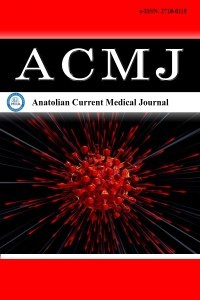1.
Joseph RP, Royse KE, Benitez TJ, Pekmezi DW. Physical activityand quality of life among university students: exploring self-efficacy, self-esteem, and affect as potential mediators. Qual LifeRes. 2014;23(2):659-667.
2.
Rosenberg M. Society and the adolescent self-image. 3rd ed. NewJersey: Princeton University Press; 2016.
3.
Kavosi A, Saadati M, Movahedi A, et al. Physical activity enhancesself-esteem of male college students; a randomized controlledtrial. Int J Travel Med Glob Health. 2015;3(2):49-52.
4.
Fox KR. The influence of physical activity on mental well-being.Public Health Nutr. 1999;2(3a):411-418.
5.
Salamuddin N, Harun MT, Al-Rashed SA. The effects of selectedaerobic exercise modalities on self esteem among female students.Asian Soc Sci. 2014;10(5):141.
6.
Wunsch K, Fiedler J, Bachert P, Woll A. The tridirectionalrelationship among physical activity, stress, and academicperformance in university students: a systematic review andmeta-analysis. Int J Environ Res Public Health. 2021;18(2):739.
7.
Hubbs A, Doyle EI, Bowden RG, Doyle RD. Relationships amongself-esteem, stress, and physical activity in college students.Psychol Rep. 2012;110(2):469-474.
8.
Bandura A, Cervone D. Differential engagement of self-reactiveinfluences in cognitive motivation. Organ Behav Hum DecisProcess. 1986;38(1):92-113.
9.
Bandura A, Freeman WH, Lightsey R. Self-efficacy: the exerciseof control. J Cogn Psychother. 1999;13(2):158-166.
10.
Anderson ES, Wojcik JR, Winett RA, Williams DM. Social-cognitive determinants of physical activity: the influence of socialsupport, self-efficacy, outcome expectations, and self-regulationamong participants in a church-based health promotion study.Health Psychol. 2006;25(4):510.
11.
Scully D, Kremer J, Meade MM, Graham R, Dudgeon K. Physicalexercise and psychological well being: a critical review. Br J SportsMed. 1998;32(2):111-120.
12.
Lowery SE, Nicpon MF, Blanks EH, et al. Body image, self-esteem, and health-related behaviors among male and femalefirst year college students. J Coll Stud Dev. 2005;46(6):612-622.
13.
Saglam M, Arıkan H, Savcı S, et al. International physical activityquestionnaire: reliability and validity of the Turkish version.Percept Mot Skills. 2010;111(1):278-284.
14.
Cuhadaroglu F. Adolescents’ Self-Esteem. phD Thesis, HacettepeUniversity Faculty of Medicine, Department of Psychiatrics,Ankara;1986.
15.
Hovardaoğlu S. Özdemir YD. Vücut algısı ölçeğinin güvenirlik vegeçerlik çalışması/Şizofrenik ve majör depresif hastaların bedenimgelerinden doyum düzeyleri, yayınlanmamış yüksek lisan tezi,Gazi Üniversitesi Sosyal Bilimler Enstitüsü, Ankara; 1990.
16.
Aypay A. Genel Öz Yeterlik Ölçeği (GÖYÖ)’nin Türkçe’yeuyarlama çalışması. İnönü Üni Eğit Fak Derg. 2010;11(2):113-132.
17.
Rathee NK. Analysis of self-perception among female collegestudents. JESP. 2009;5(2):87-90.
18.
Tiggemann M, Williamson S. The effect of exercise on bodysatisfaction and self-esteem as a function of gender and age. SexRoles. 2000;43(1):119-127.
19.
Fox KR. The effects of exercise on self-perceptions and self-esteem. In: Biddle SJ, Fox KR, Boutcher SH, eds. Physical Activityand Psychological Well-Being. London: Routledge:2000:88-117.
20.
Ekeland E, Heian F, Hagen KB. Can exercise improve self esteemin children and young people? a systematic review of randomisedcontrolled trials. Br J Sports Med. 2005;39(11):792-798.
21.
Lowery SE, Nicpon MF, Blanks EH, et al. Body image, self-esteem, and health-related behaviors among male and femalefirst year college students. J Coll Stud Dev. 2005;46(6):612-623.
22.
Pauline J. Physical activity behaviors, motivation, and self-efficacy among college students. Coll Stud J. 2013;47(1):64-67.

